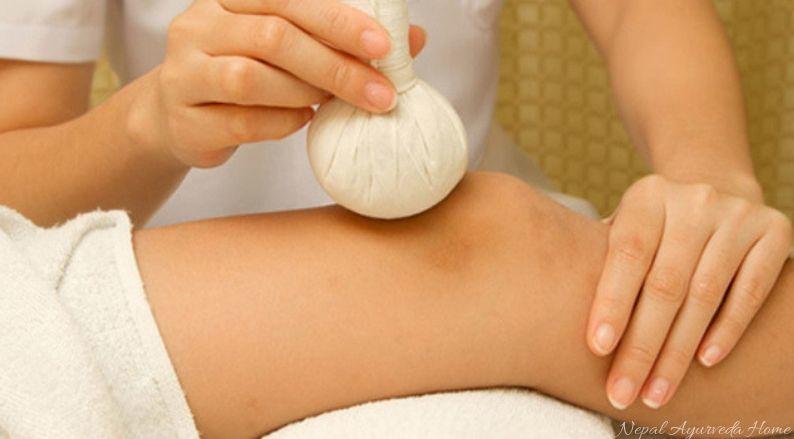Osteoarthritis is a type of arthritis which is the most common joint inflammation that results from cartilage degeneration. This disease is known as Sandhivata in Ayurveda which is due to the imbalance in Vata and Kapha dosha in our body. Its etiology can be aging, heredity, and injury from trauma or disease. The most common symptom of osteoarthritis is a pain in the affected joint(s) after repetitive use. Other osteoarthritis symptoms and signs include swollen joints, joint stiffness, joint creaking, and loss of range of motion.
The vitiated Vata dosha when takes shelter in Joints causes pain, swelling, stiffness, crepitus is known as sandhivata. The joining of two or more parts coming together is called sandhi, maybe bones, muscles, tendons, nerves, etc. Whenever the involvement of any joints is mostly considered as impairment of bone tissues, but so many other factors also play an important role in sandhivata as mentioned above.
How Does Osteoarthritis Occur?
In day to day activities joints provide mobility but because of aging, traumas, accidents, frequent use of weight-bearing joints, normal structure and functions of joints alter. Normally for any joint to move freely some form of lubrication is essential which is provided by Synovial fluid. It reduces not only frictional forces across moving surfaces but also maintains the nutrition to cartilage bones. It is a well-known fact that provocation of Vata leads to degeneration of Bone tissues and also decreases the quantity and quality of Synovial fluid. Decreased synovial fluid helps in the destruction of articular surfaces of bones. Joints are protected by Muscles, nerves, cartilages, etc. which helps in mobility. Normally these structures have some elastic property to protect joint from full load or joint compressive forces. Failure of this mechanism due to aging or poor coordination leads to poor load sharing and overloading of the joints tissues with sooner or later leads to the destruction of tissues. Hence before treating the sandhivata one should consider all the above factors.
An Ayurvedic Approach/Management To Osteoarthritis Treatment
1. Panchakarma Procedures
Panchakarma which is body cleansing procedure is found very effective in management of Osteoarthritis and all types of arthritis. The pre procedures of panchakarma like snehana and swedana play a vital role in pain management and medical supply of calcium and related disorders. Not only in pain management but for the proper treatment of degeneration in natural way, panchakarma therapies play important role, especially for geriatric care.
2. Snehana(Oleation)
It is the first and foremost important therapy for vataj disorders where the internal and external application of oils, ghee, and their derivatives are used. Administration of Oily medicines orally and application of oily drugs externally is very important in sandhivata. Orally Ghee preparations (Ghrita) Mahatikta ghrita, Ashwagandha ghrita etc. can be prescribed in sandhivata, if the patient is not obese or hypertensive. According to the condition of the patient the external treatments like abhayanga (Massage), lepa (Poultice), udvartan (Dry Powder massage) should be given. The famous oils which have got the tremendous record in management of osteoarthritis are Mahamash oil, Dasmool oil which is the classical ayurvedic preparation mentioned in Ayurveda.
3. Swedan (Sweating Therapy)
Swedan is carried out after application of oil to the whole body or particular part only. It acts as an analgesic and relieves the pain immediately. Different types of steam therapy can be used in this disease such as- Nadiswedana,Bashpaswedana and Pindaswedana, etc. should be used according to the need. The stiff and rigid parts of tha body can be made soft and moveable with the help of snehan and swedana therapy.
4. Janu Basti (Knee Local Enema)
It is one of best treatment and should be administered for Janu sandhi pains (knee joint pain and swelling). The border by the paste of black gram is made and lukewarm oil is put in the joints for certain time. This gives the best result when combined with oleation and sweating therapy. This treatment has got huge success to chronic patients who had lost the hope of its management.
5. Mild Laxation (Mridhu virechan)
In spite of doing snehan,swedan procedure if desired results are not seen than mridu virechana should be given. It can be done by Triphala powder, Isabgol, Castor oil, etc.
6. Enema (Basti)
Enema through the anal route is given to hold for some period of time and is evacuated later which should be administered with following drugs: Ashwgandha ghrita basti Mahatikita ghrita basti Nirgundi taila basti Mahanarayan taila Mahamamshadhi taila basti etc.
7. Niruha Basti( Decoction Enema)
If a patient is having constipation niruha Basti should be administered with triphala qwatha (decoction) 400ml, sesamum oil 100ml, Honey 50gm, saindhav lawan (Rock Salt) 10gm.
8. Shaman (Palliation)
Whenever the patient is too weak palliation therapy should be prescribed. According to the requirement, the following drugs can be administered for better results.
- Single drugs- Yasthimadhu, Guduchi, Ashwagadha, Amalaki
- Compound preparation- Simhanaad guggulu, Yograj guggul ,Mahayograj guggul • Amrita guggul ,Tryodhashang guggul
- Rasakalpa- Yogendra ra7s • Vatagajankush rasa, Brihat vata chintamani rasa, Samirpannog rasa
- Oils- Mahanarayan oil • Nirgundi taila , Mahavisha garva taila, Bala taila
